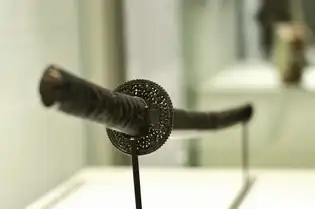剣と鉄 - Swords and Steel
The best swords in the world are said to be made in Japan. From ancient times, this has been true, and the best of the best have been thought to come from the Izumo District of the Sanin Area. The reasons for such high quality work include the facts that the iron sand found in the Izumo District is very pure – iron made from this sand is exceptionally strong – and the Tatara Furnace!
日本の刀は古くから、世界中に数多く存在する刀剣の最高峰に君臨してきました。そして、その中でも最高傑作の呼び声が高いものはこの出雲地方で作られたと言われています。これは、この地方で採れる砂鉄は純度が非常に高く、たいへん丈夫な鉄が作られたことと、「たたら」によるものです。
In ancient times, the Tatara Buki, the furnace used to melt the iron sand, was made of dried mud. Tatara came from the Chinese word, and came to mean the hut in which the steel-making process was conducted. Buki meant the bellows used to make the fire hotter. In the Edo period (1600 – 1867), a typical furnace measured one meter deep, 2.7 meters long, and 90 centimeters wide. The walls were from nine to 15 centimeters thick.
古代には、「たたらぶき」と呼ばれ、乾燥した泥から作られた砂鉄を溶かすための炉がありました。「たたら」という言葉は、中国語の訛ったものですが、やがて製鉄に使用する小屋を指すようになりました。「ぶき」は火力を強めるためのふいごのことです。江戸時代(1600〜1867)には、深さ1メートル、長さ2.7メートル、幅90センチ、壁の厚さ9〜15センチの炉が多く使用されていました。
When the Tatara Furnace was introduced into Japan from China and Korea in the Nara period (710 – 794), hand-bellows were used to increase the fire’s temperature. The Japanese improved this process by inventing the foot-bellows, which were more efficient.The iron produced by these early Japanese was used to make farm tools, carpentry tools, tea ceremony kettles, and many other useful objects, including the world-famous Japanese sword. The furnace was used continuously, with various developments added, until the end of the 19th century. During World War I, the shortage of steel in Japan caused a return to the Tatara process, but after that, it almost disappeared.
奈良時代(710〜794)に中国から朝鮮半島を経由して日本にたたらぶきが伝わったとき、火の温度を上げるためのふいごは手動でしたが、当時の日本人はこれをより効率的な足踏み式に改良しました。こうして作られた鉄は、今や全世界にその名をとどろかせる日本刀を筆頭に農機具、大工道具、茶会に使う鉄瓶を始め多くの用途に用いられました。たたらぶきはさまざまな改良を重ね、19世紀末まで使用されました。その後一時途絶えていましたが、第一次世界大戦中に鉄が不足するようになると復活しました。しかし、それ以降はほぼ姿を消してしまいました。
Probably the oldest operational Tatara Furnace in existence today can be found in Yoshida. Yoshida’s Tatara Furnace is about 600 years old. In Yokota, steel is still made using this furnace. Three of these furnaces were built by the Japanese Sword Preservation Society to provide sword-makers with traditional steel. The old legend of Susanoo no Mikoto killing a huge eight-headed snake and cutting off its heads and its eight tails as well, started the history of iron in Japan. Susanoo found a beautiful, iron sword in one of the middle tails of the snake and named it Murakumo. He gave this sword to Amaterasu the Sun Goddess. She gave it to Ninigi no Mikoto, as the third item of the Three Imperial Regalia.
吉田村にあるたたらぶきが、現在操業可能なものの中ではおそらく最も古いと思われます。実に600年も前から使用されています。横田町では、このたたらぶきで現在でも製鉄を行っています。伝統的な製法を守るため、日本刀保存協会により三つのたたらぶきが作られています。八岐大蛇(ヤマタノオロチ)の物語は、日本における鉄の歴史の幕開きを物語ります。須佐之男命は大蛇を退治した後、大蛇の8本の尻尾の1本から美しい剣を見つけ、これに「叢雲(むらくも)」と名付け、太陽の女神天照大神に渡しました。そして天照大神はこれを三種の神器の一つとしてニニギノミコトに与えました。
The name of this sword was later changed to Kusanagi, according to an ancient legend. It is said that the sword stands for lightning and strength. How I love the old Japanese stories! The bronze and iron ages appeared at about the same time in Japan. If we want to date Susanoo, it would be over 2,000 years ago. Since he was Amaterasu’s brother, it also dates all Japanese legends from this period. Seriously considering this, a National Foundation Day of February 11, 660 B.C. is obviously unlikely. A much more practical date would be 660 A.D., after the Taika Reform, which helped unite Japan.
伝承によると、剣は後にその名を「草薙(くさなぎ)」に変えたということです。草薙は光と強さを象徴する剣であるといいます。私はこうした日本神話が大好きです! 日本では、青銅器時代と鉄器時代はほぼ同時期に始まったようです。須佐之男命が誕生したのはおそらく今から2000年以上前でしょう。また、須佐之男命は天照大神の弟であることから、日本神話が生まれたのもこの時期であると思われます。ただし、日本の建国を紀元前660年とする紀元節は、明らかに史実に反していると思います。現実的に見て、日本国統一を促進する役目を果たした大化の改新の後の西暦660年と考えるのが妥当でしょう。
